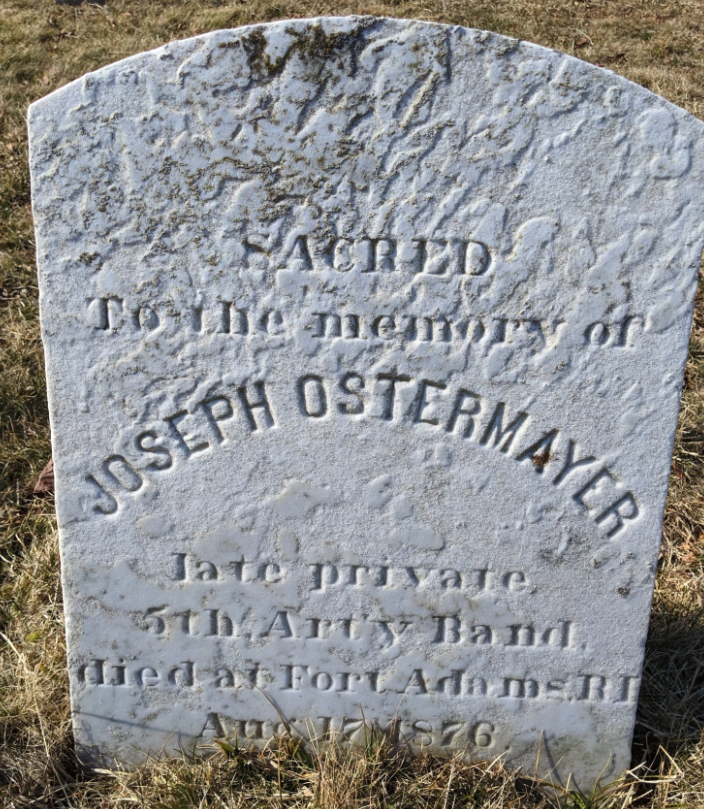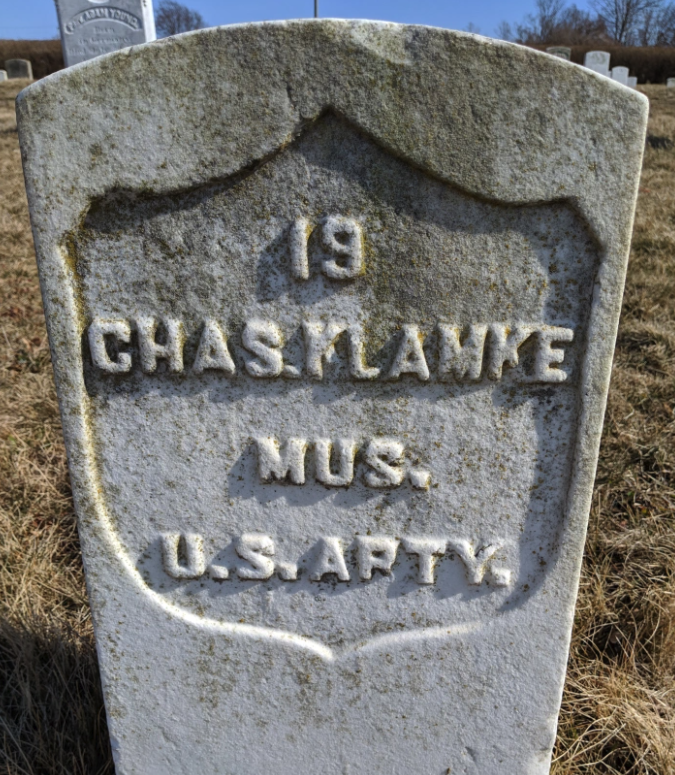Trouble at the Fort
Fort Adams has been the home to musicians since its first days at the beginning of the 19th century. Today we are going to talk about some of the trouble those musicians have gotten themselves into.
Desertion is a common theme
Newport Mercury, October 8, 1814
From the earliest days of the fort, desertion was an issue. Our first record of a deserting musician is the above announcement of an award for the capture of George W. Pratt. We don’t know much about the outcome of this desertion. We do know that Pratt was a musician in Major Wood’s State Corps, Rhode Island Militia during the War of 1812.
If At First You Don’t Succeed
During the Civil War, Fort Adams was the home of the 15th United States Infantry Regiment beginning in the fall of 1862. The fort was used for recruitment, training, and recovery for the soldiers fighting with the Army of the Cumberland. Music was a big part of the life at the fort, from the training of the child musicians to the time the Regimental Band spent in Newport.
One of the musicians, who was most likely a member of the Regimental Band was one Thomas Gilmore, born in Ireland, a member of the Regimental Band. He had served in the 15th Regimental since at least 1861.
1861 Army Enlistment Registry
On April 20, 1864, Gilmore was given a pass to visit the city of Newport for the day and didn’t return. The next day he was apprehended in the Boston area and returned to Fort Adams under arrest. He was charged with desertion. His court martial took place on July 19, 1864, with one charge against him, Desertion.
National Archives, File NN-2395, Gilmore, Thomas, page 3
It was a very quick trial with only a few witnesses and a statement from Gilmore. The witnesses would attest to the charges and the fact that Gilmore was an excellent soldier who had re-enlisted with the regiment multiple times, and that in their opinion he would never desert. So why did he go to Boston?
In a statement to the court, Gilmore explained his actions, “I heard that my brother whom I hadn’t seen for eighteen years was in Boston. It was only three hours travel and the temptation to go and see him was too much for me.”
He was eventually convicted of being absent without leave and ordered to pay for the cost of his capture and return to Fort Adams.
Did he learn from this mistake?
National Archives, File MM-2740 Gilmore Thomas, Page 3
On July 18, 1865, Gilmore again disappeared from Fort Adams, this time returning himself four days later and surrendering. Again, he wanted to visit his brother in Boston. This time his brother (we don’t know if it is the same one) was the only remaining of his four brothers who joined the Union Army at the start of the war. He was serving time in the jail at Fort Adams for excessive drinking and decided he should go to see his brother. He was found guilty and ordered to forfeit $12 a month for a year and confined for the same period of time.
Gilmore would remain in the Army until at least 1868.
Don’t Use Your Drumsticks as Weapons?
We jump ahead to September 1874 and the case of Private John McKeever of the Band of the 5th United States Artillery Regiment, stationed at Fort Adams. While performing at Rocky Point, McKeever apparently didn’t like an order to stop drumming and it went downhill from there.
National Archive, QQ1-71343129, John McKeever File, page 10
McKeever was found guilty on all of the charges except for charge 4, beating up the cornet player with a drumstick and breaking his cornet. According to witnesses a large crowd was at the event and the cornet could have been stepped on by a crowd member. He was ordered to forfeit $10 of his monthly pay for 4 months. Here is just a little of the testimony from Private Joseph Ostermayer about McKeever’s interaction with the drum major.
National Archives, QQ-71343219, John McKeever, Page 14
Calling your drum major a “Damned Fool and a Jack Ass” will end up costing you a few bucks.
Death at the Fort
Even though Fort Adams was never attacked, there were a number of deaths at the fort. The musicians of the fort were not exempt from this. Joseph Ostermayer, the musician who testified in the John McKeever trial in 1874 would die at Fort Adams two year later. He is buried at the Fort Adams Cemetery.
We don’t know the cause of his death. But we do know that drowning was the cause of a number of the deaths at Fort Adams. Ida Lewis did save a lot of soldiers (some of the first soldiers she rescued were musicians) and you can hear a song dedicated to her here but she couldn’t save them all.
Our first recorded death of a musician at Fort Adams comes in 1842 with the drowning of Charles Klamke. Klamke was serving in Company F, of the 2nd United States Artillery Regiment when he drowned on September 21, 1842. He is buried in the Fort Cemetery.
Record of Interments in the National Cemetery at Fort Adams
Unfortunately, the Boston Post butchered his name in their announcement of his death.
Boston Post, September 26, 1842
Tragedy at Fort Adams
Corp. Nelson Henry was a member of the Band of the 7th Coastal Artillery Corps at Fort Adams beginning in 1907. He had previously served as a musician in the 15th Infantry Regiment and was transferred to Fort Adams from the Band of the 5th U.S. Infantry. In 1908 he attempted to kill his wife and took his own life. I will let the Boston Globe tell the story.
Boston Globe, January 1, 1909
His wife survived the attempt on her life. Nelson Henry was buried in the cemetery at Fort Adams.












